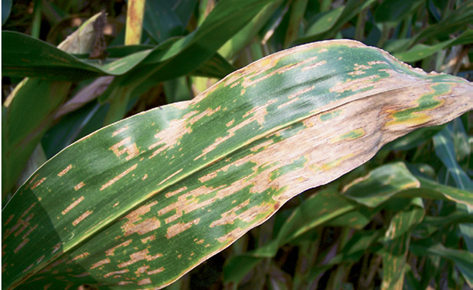Gray leaf spot (GLS)
Gray leaf spot (GLS) is caused by the fungus Cercospora zeae-maydis. it is recognized as one of the most significant yield-limiting diseases of maize(corn) worldwide (Lipps, P. E., White, D. G., Ayers, J. E., and Dunkle, L. D. 1998). Gray leaf spot requires extended periods of high humidity and warm conditions, it is favoured in situations with reduced tillage and continuous corn growing. Gray leaf spot overwinters in corn debris on the soil surface. Airborne spores are then spread locally and regionally from these debris to newly planted corn fields. Lower leaves are usually the sites of primary infection in the developing canopy.
Gray leaf spot lesions begin as small necrotic pinpoints with chlorotic halos, these are more visible when leaves are held against the sun. These early lesions are easily confused with other foliar diseases such as anthracnose leaf blight, eyespot, or common rust. After about two weeks, lesions appear tan to brown in color and rectangular in shape, parallel to the veins of the leaf. These lesions can be described as having the appearance of a “matchstick.” As sporulation commences, the lesions take on a gray color. Lesions may eventually coalesce killing the leaves.
